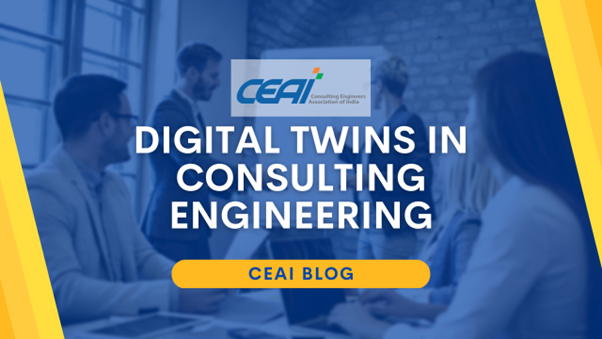
As technology continues to advance, it is no surprise that the consulting engineering industry is evolving alongside it. One of the most significant technological advancements in recent years is the development of digital twins. Digital twins are virtual models of physical assets, systems, or processes that replicate the behavior of the physical asset in real time, using data collected from sensors and other sources. They have become an increasingly popular tool in consulting engineering, allowing engineers to test and optimize designs, monitor performance, and identify potential problems before they occur. In this blog, we will delve deeper into the benefits of digital twins in consulting engineering and explore how they are shaping the future of the industry.
What are Digital Twins?
Digital twins are virtual models of physical assets, systems, or processes. They replicate the behavior of the physical asset in real time, using data collected from sensors and other sources. This data is analyzed by algorithms to create a digital representation that can be used for simulations, predictions, and other purposes.

In the consulting engineering field, digital twins can be used to model everything from buildings and infrastructure to manufacturing processes and supply chains. They provide a virtual platform for engineers to test and optimize designs, identify potential problems, and make data-driven decisions.
Benefits of Digital Twins in Consulting Engineering
Digital twins offer a highly accurate and detailed representation of physical assets, which can help engineers to identify issues that may not be apparent in the real world. This can help to reduce the risk of costly errors and ensure that projects are completed on time and on budget.
In addition, digital twins can be used to optimize energy efficiency and sustainability. By modeling different scenarios and analyzing data from sensors and other sources, engineers can identify areas where energy can be saved and make data-driven decisions to reduce waste and improve sustainability. Another benefit of digital twins is that they enable engineers to collaborate more effectively across different departments and locations. By sharing a single, unified model, teams can work together more efficiently and effectively, reducing the risk of miscommunication and errors.

Digital twins also provide a valuable tool for training and education. By providing a virtual environment for learning, engineers can practice and refine their skills without the risk of damaging physical assets. This can help to improve safety and reduce costs associated with training. Finally, digital twins provide a valuable source of data for ongoing asset management. By collecting data from sensors and other sources, engineers can monitor the condition of assets in real-time and make data-driven decisions to improve performance and reduce maintenance costs.
Digital Twins and the Future of Consulting Engineering
As digital twins become more sophisticated and advanced, they are likely to become an even more integral part of consulting engineering. They have the potential to transform the way we design, build, and manage assets, making the process more efficient, cost-effective, and sustainable.

As the consulting engineering industry continues to evolve, it’s essential to stay on top of emerging technologies like digital twins. At CEAI, we are committed to promoting innovation and best practices in the industry, and we believe that digital twins have the potential to drive significant progress in the years to come.
Conclusion

Digital twins are an exciting development in consulting engineering, offering a range of benefits and opportunities for engineers and asset managers. By providing a virtual environment for testing and optimization, monitoring performance, and identifying potential problems, they have the potential to revolutionize the industry and drive progress toward a more sustainable future. At CEAI, we look forward to seeing the continued growth and adoption of digital twins in consulting engineering.
